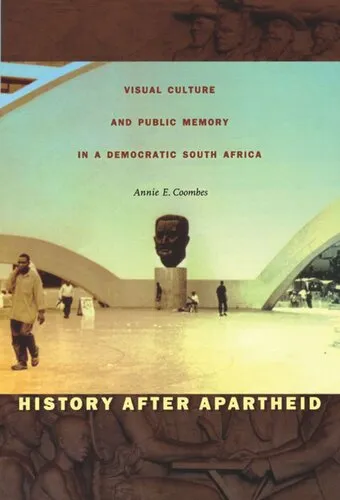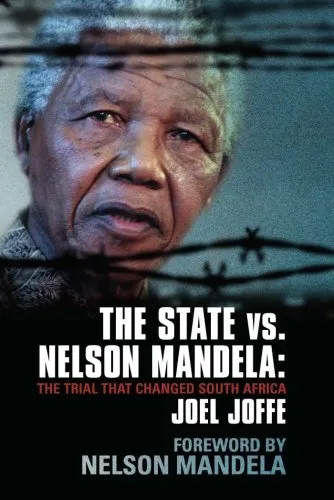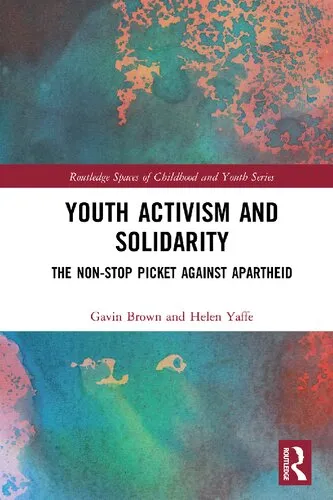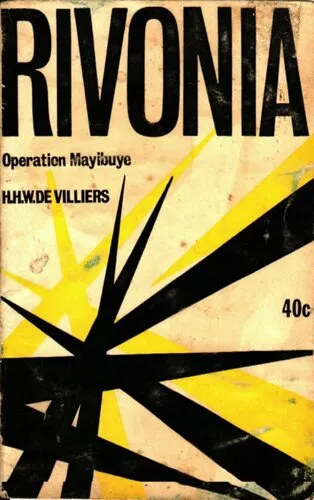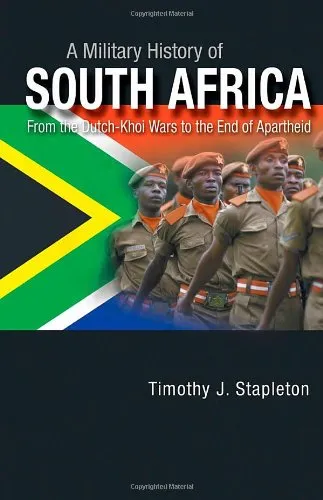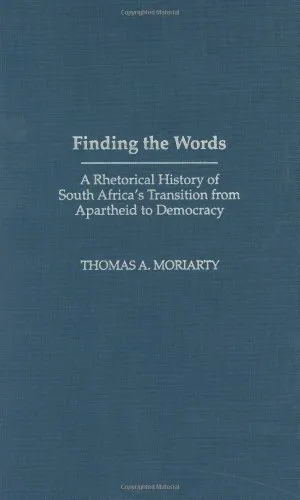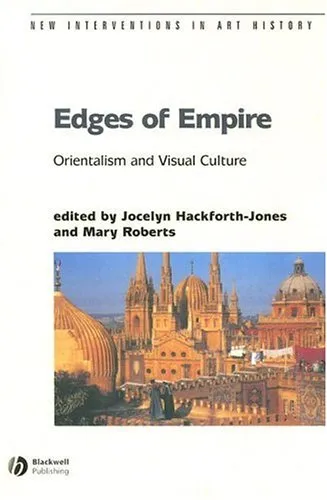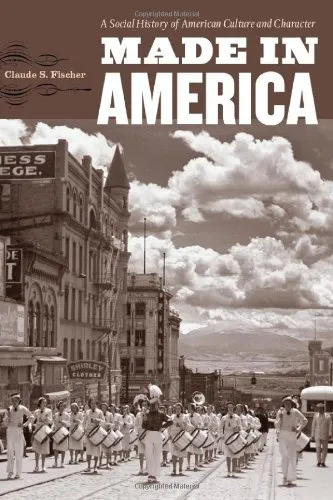History after Apartheid: Visual Culture and Public Memory in a Democratic South Africa
4.5
بر اساس نظر کاربران

شما میتونید سوالاتتون در باره کتاب رو از هوش مصنوعیش بعد از ورود بپرسید
هر دانلود یا پرسش از هوش مصنوعی 2 امتیاز لازم دارد، برای بدست آوردن امتیاز رایگان، به صفحه ی راهنمای امتیازات سر بزنید و یک سری کار ارزشمند انجام بدینکتاب های مرتبط:
خلاصهای از کتاب
کتاب "History after Apartheid: Visual Culture and Public Memory in a Democratic South Africa" نوشته آنی ای. کومبس با نگاهی عمیق و موشکافانه به موضوع پیچیده نحوه بازسازی حافظه جمعی و فرهنگ بصری در آفریقای جنوبی پس از پایان نظام آپارتاید، میپردازد. این کتاب چگونگی مواجهه جامعه آفریقای جنوبی با گذشته پرتنش و تلاشهای آنها برای شکلدادن به هویت جدید در دوران دموکراتیک را بررسی میکند. نویسنده به بررسی نقشی که هنرها و نمایشهای عمومی در این فرآیند ایفا میکنند، پرداخته و تحلیلهای جامعی از آثار هنری، بناهای یادبود و موزهها ارائه میدهد.
نکات کلیدی
- افشای چگونگی استفاده از فرهنگ بصری برای بازسازی و بازآفرینی هویت ملی در دوران پس از آپارتاید.
- بحث درباره اهمیت مکانهای عمومی و هنرهای عمومی به عنوان اخلاقسازان جامعه.
- تجزیه و تحلیل نقادانه از تعامل بین سیاستهای دموکراتیک جدید و مدیریت تاریخی حافظه عمومی.
- بررسی نقش هنرمندان و متولیان هنر در بازتاب و شکلدهی به روایتهای ملی و تاریخ عمومی.
جملات معروف از کتاب
"در سرزمین زخمخورده از نفرت و تقسیم، هنر میتواند زبانی برای وحدت و بهبودی باشد."
"حافظه جمعی چیزی نیست که به سادگی از گذشته به ارث برسد، بلکه مصنوعی است که فعالانه ساخته میشود."
چرا این کتاب مهم است
کتاب "History after Apartheid" برای همه کسانی که به دنبال درک بهتر چالشهای دوران پس از آپارتاید و نقش پیچیده فرهنگ بصری و حافظه عمومی در ساخت جامعهای تازه هستند، اثری بنیادین است. این کتاب با ارائه تحلیل و دیدگاههای جدید، خوانندگان را به تفکر عمیق درباره موضوعات مهمی همچون آشتی، عدالت اجتماعی و هویت تشویق میکند. در زمانی که جوامع سراسر جهان با میراثهای تاریخی خود مبارزه میکنند، این کتاب نهتنها به مخاطبان آفریقای جنوبی بلکه به جامعه جهانی نیرو و الهامبخش است.
Welcome to a comprehensive introduction to "History after Apartheid: Visual Culture and Public Memory in a Democratic South Africa," a pivotal exploration by Annie E. Coombes into the intricate process of memory reconstruction in post-apartheid South Africa. Through this book, Coombes delves into the intersections between visual culture and the remaking of public memory in a nation undergoing profound transformation.
Detailed Summary of the Book
In "History after Apartheid," Coombes critically examines the role of visual culture in shaping the collective memory of South Africa during its monumental transition from apartheid to democracy. The book navigates through various public commemorations, artistic expressions, and heritage sites, offering insights into how these elements contribute to national identity. Coombes argues that visual representations are not merely reflections of history but active components in rewriting narratives. The work emphasizes the complexities involved in reconciling a divided past with hopes for an inclusive future.
The book is structured around various case studies that highlight the nuanced ways in which history is represented and mediated through museums, monuments, and multimedia art. Coombes meticulously analyzes how these visual mediums embody the tensions between remembering and forgetting, between inclusion and exclusion. Her approach is both academic and accessible, drawing on interdisciplinary methods to unravel the cultural strategies deployed in negotiating public memory.
Key Takeaways
- The role of visual culture is critical in shaping and reshaping public memory, especially in societies dealing with historical trauma.
- Reimagining national identity in post-apartheid South Africa involves a delicate balance between acknowledging past injustices and fostering a sense of unity.
- Monuments, museums, and art are not merely passive forms of representation but active agents in the creation and dissemination of collective memory.
- The process of memory reconstruction is fraught with challenges, including the risk of oversimplifying complex histories and marginalizing alternative narratives.
Famous Quotes from the Book
"In the hands of artists and curators, the visual is a powerful tool for distilling, contouring, and disseminating the narratives that societies choose to remember or forget."
"Public memory in South Africa is not just about bridging a divided past but about envisioning an inclusive future that honors diverse voices and experiences."
Why This Book Matters
As South Africa continues to grapple with the legacies of its apartheid past, "History after Apartheid" offers invaluable insights into the ongoing negotiation of identity, memory, and history. Coombes's work is essential for understanding how nations can confront controversial pasts without resorting to amnesia or simplification. The book is particularly relevant for academics, historians, and cultural practitioners interested in the intersection of memory studies, visual culture, and post-colonial studies.
Moreover, by focusing on South Africa, a country emblematic of racial reconciliation struggles worldwide, Coombes's analysis has broader implications for other societies similarly engaged in the process of coming to terms with divisive histories. Her work encourages a reflective and critical engagement with the past, demonstrating that memory work is integral to social and cultural transformation.
دانلود رایگان مستقیم
شما میتونید سوالاتتون در باره کتاب رو از هوش مصنوعیش بعد از ورود بپرسید
دسترسی به کتابها از طریق پلتفرمهای قانونی و کتابخانههای عمومی نه تنها از حقوق نویسندگان و ناشران حمایت میکند، بلکه به پایداری فرهنگ کتابخوانی نیز کمک میرساند. پیش از دانلود، لحظهای به بررسی این گزینهها فکر کنید.
این کتاب رو در پلتفرم های دیگه ببینید
WorldCat به شما کمک میکنه تا کتاب ها رو در کتابخانه های سراسر دنیا پیدا کنید
امتیازها، نظرات تخصصی و صحبت ها درباره کتاب را در Goodreads ببینید
کتابهای کمیاب یا دست دوم را در AbeBooks پیدا کنید و بخرید
1488
بازدید4.5
امتیاز0
نظر98%
رضایتنظرات:
4.5
بر اساس 0 نظر کاربران
Questions & Answers
Ask questions about this book or help others by answering
No questions yet. Be the first to ask!
